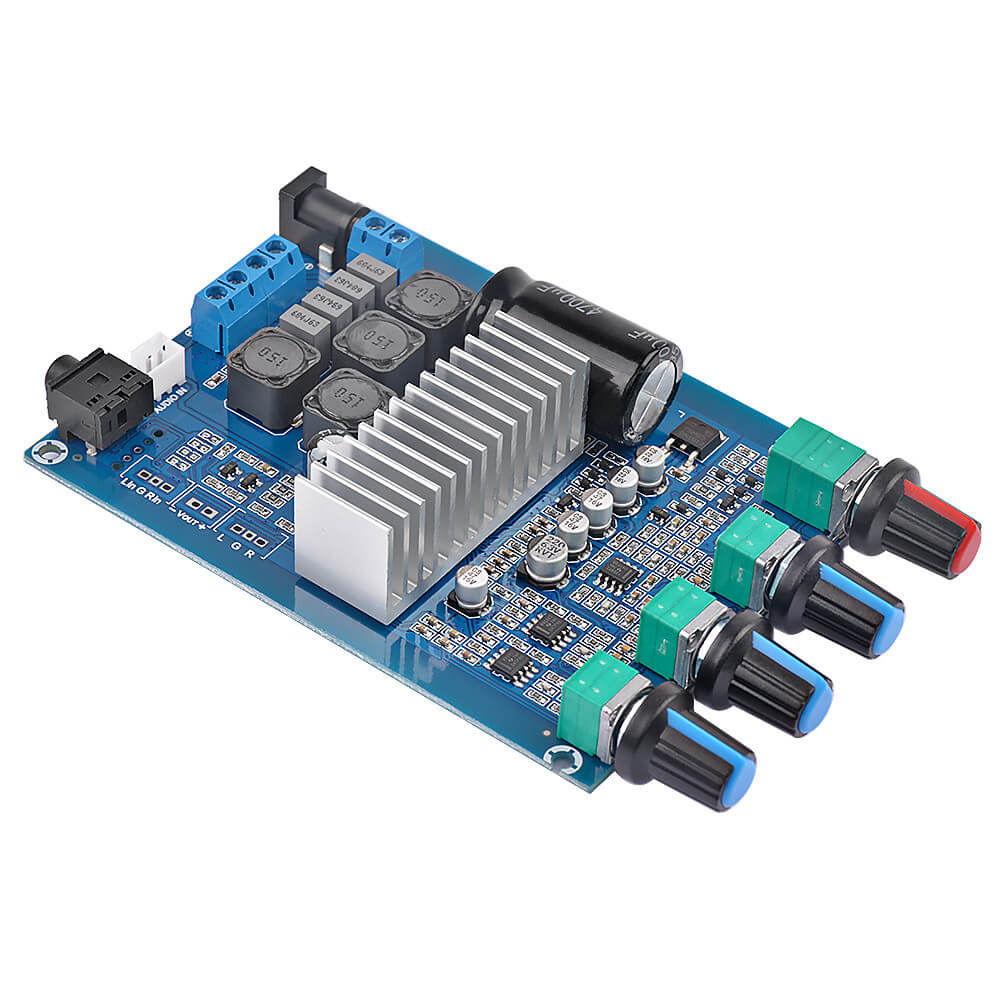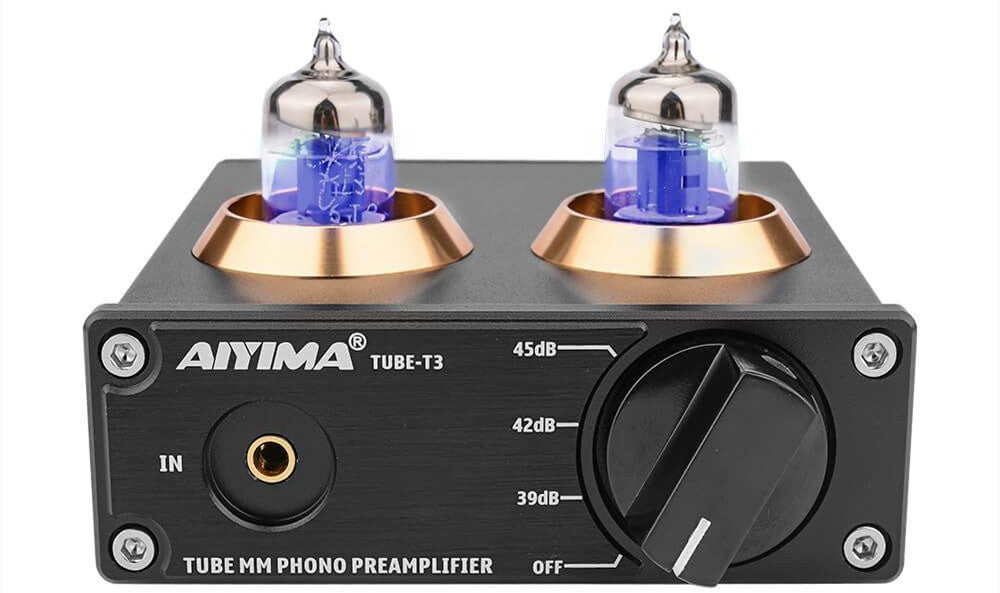Basic principle circuit of stereo amplifier
The following figure shows the principle circuit of a stereo audio amplifier. When analyzing the circuit, you should first understand the function of each component of the circuit, and then start from the input terminal and use the flow of the main signal as a clue to divide the circuit into several experimental contents according to the function. The left and right channel circuits of the stereo amplifier are symmetrical up and down, so only one channel needs to be analyzed. The signal is input by the signal source, and after a certain signal is obtained by the volume potentiometer (GH), it is balanced by the balance potentiometer to the ground, connected to the operational amplifier at the same phase end and amplified for output, and then amplified by the pre-transistor input power amplifier transistor output.

Selection of stereo amplifier
(1) Determine the power
A 15-square-meter audio-visual room usually plays at a rated power of 1W, which is enough to listen to news programs, but to enjoy music requires sufficient power reserve. From the requirements of high-fidelity playback, of course, the greater the power reserve of the amplifier, the better. However, if the power reserve is too large, the volume and weight of the required power amplifier will be large, and the cost will become expensive. Therefore, for general professional or household high-fidelity audio, its power reserve should be greater than 50 times, and for household popular composite audio and mid-range composite audio, its power reserve is generally between 10-20 times. From this point of view, for stereo audio combination, the reserve power of the amplifier should be more than 50 times the general listening power. If you usually use 2 × 1W power to play, then when choosing, you should consider buying an amplifier of about 2 × 50W.
(2) Determine the style
The amplifier is divided into two types: front and rear stage split amplification and front and rear stage combined amplification. The advantage of the split type is that the front and rear stages are shielded from each other to avoid mutual interference, but the price is more expensive, and an external connection is required. The combined structure is simple, but the electroacoustic index is generally not as high as that of the split amplifier. When choosing, you can consider the degree of sound quality and the performance of the signal source according to your personal economic situation.
(3) Matching with speakers
The matching of the amplifier and the speaker is a problem that should be considered when selecting the model. It directly relates to the effect of music playback and the life of the equipment. The matching of amplifier and speaker mainly includes impedance matching, damping matching and power matching. For power amplifiers, impedance matching is the first. It requires that the impedance of the speaker (speaker) as a load should not be less than the rated load impedance of the amplifier. Power matching generally means that the rated power of the power amplifier matches the rated power of the speaker. Damping matching means that the damping coefficient should be appropriate. The damping coefficient is the ratio of the speaker impedance to the amplifier output impedance. Practice shows that when the damping coefficient is small, the low-frequency characteristics of the speaker, the frequency characteristics of the output sound pressure, and the characteristics of high-order harmonic distortion will all deteriorate. If the damping coefficient is too large, the effect on the real performance is not significant. Therefore, the more consistent view is that the damping coefficient should be between in 10-20.
(4) Inspection method when purchasing an amplifier
After the model of the amplifier is determined, the amplifier must be inspected as necessary. The specific methods are as follows: check the function and playback effect. The characteristics of the amplifier are "how many", that is, there are many signal interfaces, many panel buttons, and many random accessories. Check the function of each key one by one when purchasing. During the audition, the audition should be conducted on the left and right to see whether the volume is balanced, whether there is distortion, and whether the power and frequency response have reached the corresponding indicators. Finally, connect the video socket, tuner, laser video player and turntable in turn, and listen to the playback effects of various signals. Check the appearance and remote control functions. Check the remote control function, the remote control receiver is generally placed in the amplifier chassis, and can be remotely operated 4-5m away from the host to see if the functions are normal. Check whether the appearance of the amplifier is scratched, whether the signal interfaces are in good contact, especially pay attention to check the power supply and speaker interface to ensure that there is no looseness and bad contact. It is better to check whether the keys feel comfortable, whether the knob is smooth, and whether the elasticity is good.
Key points for using stereo amplifier
(1) Place it correctly and pay attention to heat dissipation
The amplifier should be placed in a stable and firm place, paying attention to avoid the blind corners of the room to facilitate heat dissipation. Due to the large power consumption of the power amplifier, a group of power interfaces should generally be used separately.
(2) Do not work at full capacity
Working at full load for a long time will cause damage to the amplifier. In general, it is more appropriate to let the volume knob work at 1/3 of the full range.
(3) The connection must be correct
There are many preamplifier interfaces, so be careful not to connect them wrong. Especially don't mistake the CD interface, AUX interface and MIC and turntable interface, otherwise the amplifier will be damaged due to overload of input signal. After connecting, you should pay attention to check for short circuit. The connection between the amplifier and the speaker should be short: the shorter and thicker the connection between the amplifier and the speaker, the smaller the attenuation of the signal. If possible, the use of dedicated wiring will be better. When connecting, do not short circuit.
Focus on Audio




Leave a comment
This site is protected by hCaptcha and the hCaptcha Privacy Policy and Terms of Service apply.